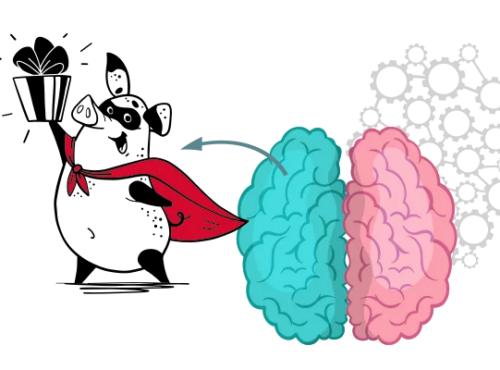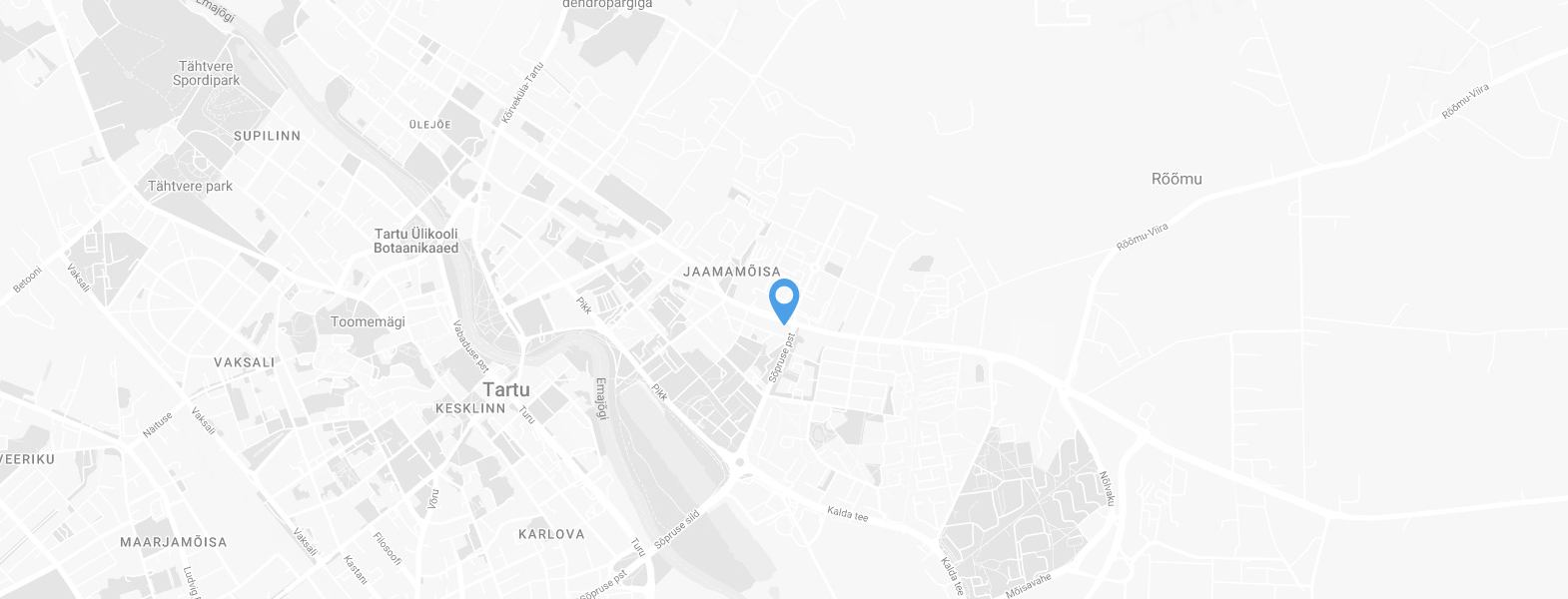The website persuasion process increases results
Here you’ll learn how to influence your customer to believe you’re better than the competition.
How do you get the customer to write to you when all competitors are offering top-notch products?
Someone arrives on your website and looks around—you have a few minutes, sometimes just seconds.
Listen to how to:
- persuade and prove that you’re not just good, but better than the competition
- organize a successful website
How do you convince the visitor that your website is better than your competitor’s?
Marketing teaches us that everyone needs to highlight their advantages, features, and the benefits to the customer. Usually, this is done by listing everything clearly and immediately trying to introduce and sell.
But the persuasion process is often forgotten. This is the secret key that brings better results.
The visitor wants to believe you’re the best on the market—but there are many providers. Marketing messages are met with hesitation and doubt—maybe there’s something better or cheaper elsewhere? You need to persuade the visitor not to leave, but to buy from you.
Typically, companies highlight the benefits of their product or service: some added value, a better feature, lower price, a guarantee, or other perks. Company advantages are also shown: fast, professional, friendly, knowledgeable, items in stock, fast delivery, instant replies.
These advantages are nice and good, but when selling similar products, providers often repeat the same things. On their own, they don’t stand out enough. These days, most offer a decent product or service, and in a competitive market, you need to move ahead of the rest.
At the same time, acquiring advantages must also be practical—it shouldn’t take too long or cost too much.
Here are the points that help achieve results.
Various persuasive elements ensure that your sales promise actually delivers. The best influence drivers are social proof, emotional reasons, and the credibility of your sales arguments. Amazon uses the latter effectively by displaying proof and reviews alongside its products to show they’re better.
Sales arguments must be believable.
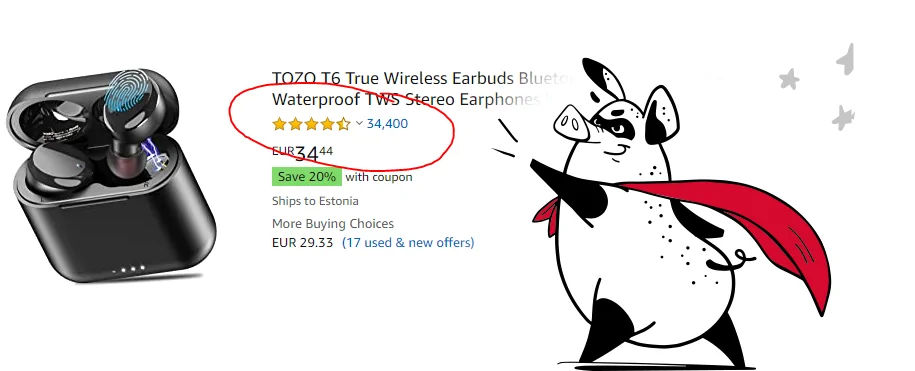
Most sales offers are written in a “buy now” tone: buy it, it’s a great product, the best there is. People have a well-developed bullshit detector because they’ve heard too many insincere sales pitches. To be credible, you need proof and persuasive elements.
Proof is the confirmation of a value proposition, sales argument, or promise that assures the customer it’s real—and not just empty sales talk.
Everyone in the market says the same thing. Everyone has a good product, many claim theirs is the best. How do you prove yours is actually better?
Highly effective proof elements include: certificates, articles, social proof (people trust a friend or neighbor more than an industry expert). All types of testimonials, credentials, and awards should be shown on the homepage. Don’t hide facts and results in a separate section—they should be visible and upfront.
Influence factors naturally vary in weight.
Most have 1–2 positive reviews, but 200 becomes a much stronger form of proof. A five-time gold medalist is trusted purely based on that fact.
Simple and powerful are numerical indicators—anything that can be expressed in numbers.
For example, the number of completed projects is a concrete metric. If you’ve completed x projects, that figure is hard to dispute. Saying “many projects” leads to the question: how many is many?
It’s also worth highlighting 5-star ratings on Google. Saying “clients are satisfied” is vague and intangible.
You should use numbers wherever possible instead of abstract terms (satisfied clients, positive feedback, many years, works well, etc.).
How many satisfied clients? What do they say? How many people work on the project? How many years of experience? How many euros/hours does the user save? (Include numbers and sources.)
Example of a numeric promise from a CNG fueling system provider:
“2x cheaper per kilometer than gasoline, 60% less carbon monoxide, 50% fewer hydrocarbons, 45% less nitrogen oxide.”
Famous names carry weight—who you’ve worked with and what you did.
If a reputable name has done their research and chosen a service provider, it’s assumed that provider must be good.

How something is said affects its impact.
Feedback is more powerful when it states clearly what and why the client liked the service. What were the specific elements and nuances that made it work well? The more fact-based and detailed the input, the more persuasive the result.

Ideal-based website model
1. Start with a value proposition
Website development starts with a value proposition that must include both value and a search engine keyword (see more in the value proposition video: https://www.youtube.com/watch?v=YseHMN7GvUI).
The value proposition is the first attention-grabber — it wins or loses half of your potential clients.
Who are you for, what do you offer, and how do you do it better than your competitors?
A typical website structure found online includes the offer, benefits, and technical information.
Service and product pages should start with the value proposition. This is the first element that captures attention — and you must win that attention on every content page, not just the homepage. Even if the homepage is impressive, your website must keep engaging for the next 20 minutes.
2. Offer and benefits
Present your offer and its benefits: standard service or product description, features, images, and an introduction.
3. Persuasion-based factors — if you have a product and its benefits, you now need proof that those benefits work.
Many others offer the same product or service — why should someone choose you?

This type of persuasive content is often missing. The harder it is to obtain, the more powerful it becomes — and it gives you a major edge in the market.
Proof should not be just product specs. These persuasive elements need to be emotional, clear, and answer the visitor’s questions.
It’s best to answer questions right on the page. How do you know what people are asking? The easiest way is to check Amazon product reviews for similar items and identify common questions — then address them on your site.
Persuasive elements
must include proof: facts, advantages, numbers, customer feedback — all should be visible.
Use what you have. If you lack certain facts or results, remove those and focus on what you can prove. If competitors have certain strengths, you must highlight your own to stay ahead. The goal is to appear better in the customer’s eyes, not the same or slightly worse.
Placement matters. If benefits are hidden across different sections, they won’t work. You must force the visitor to notice them, so even if they’re not interested, they’ll still see them while scrolling.
Technical information
Additional descriptions, detailed product or service text, technical specifications, compatible products.
All of this should form a cohesive narrative.
Example: Art Media’s website includes a value proposition, proof, and a supporting story that ties together different angles and elements.
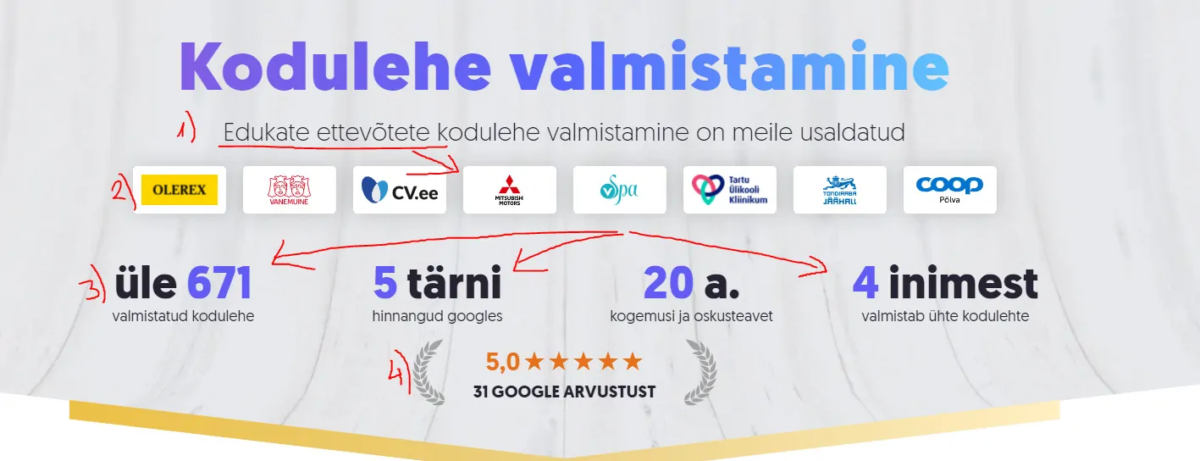
In a persuasive approach, the first rule is to support the value proposition with proof, and include various strong supporting elements. The more proof, the better.
Example 2 – from an actual service page: value proposition, proof, numerical indicators, service description (this must not be at the very bottom), and reasons to buy.
Example 3 – service page structure: the page starts with a value proposition that isn’t just a service title (“Cleaning service”) but “A cleaning service praised by customers.” The first part of the sentence is the value — which requires proof.
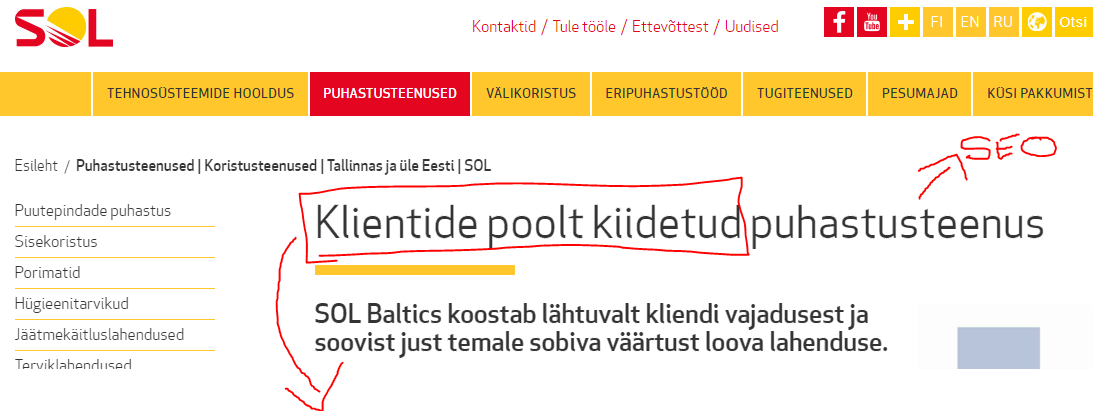
Among the logos are large clients, offering persuasive weight — if they use it, it must be good.
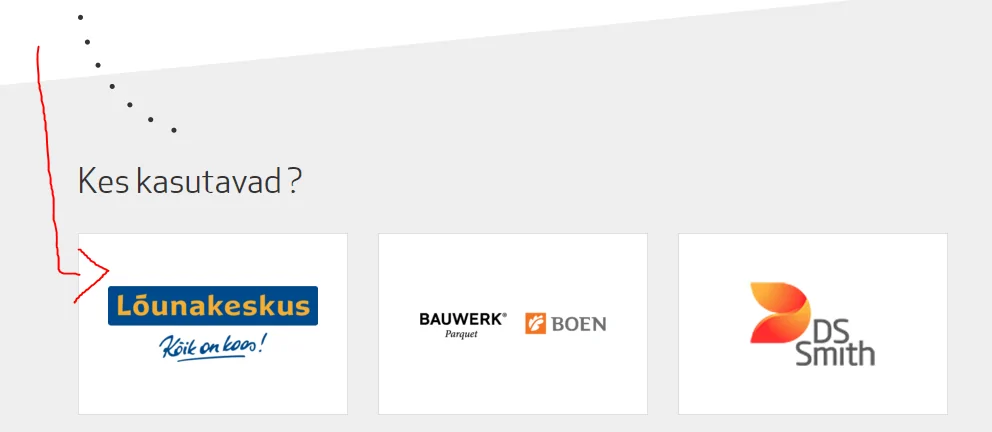
The page also shows who uses the service and what they think — social proof.

The company may be good, but what specifically do customers like about the service? Will it work for me?
This is where a customer feedback section helps — listing exactly what they liked and why.
Below the social proof section, include a bullet list of value points, followed by a call to action.
On-site comparisons
People always compare offers before making a purchase or placing an order.
Amazon does this well by including comparisons directly on their website. The visitor compares offerings internally, without ever leaving the site to visit competitors.
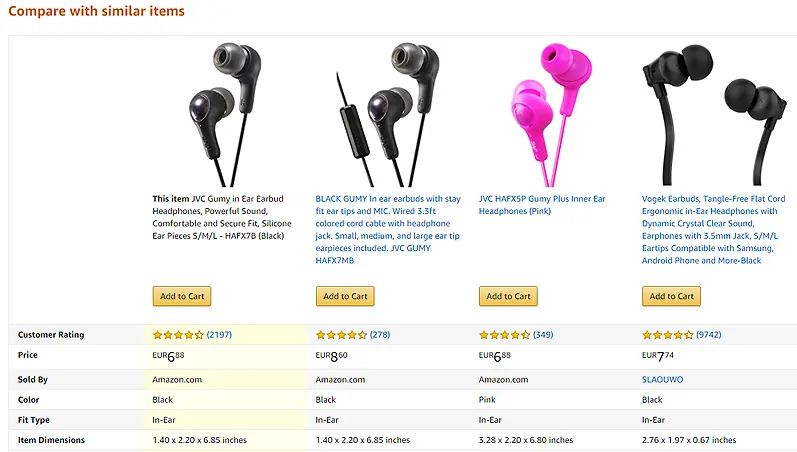
This satisfies the urge to compare — and keeps the visitor from leaving.
Compare your strengths to competitor persuasion factors
Suppose you’ve put together an excellent offer using the above elements — a 5-star proposal.
There’s one common problem: anything that’s easy and good gets copied quickly.
This means even great offers quickly flood the market with lookalikes.
If you want to stand out, you only have one advantage: speed — how fast you go to market, and how long it takes the market to respond.
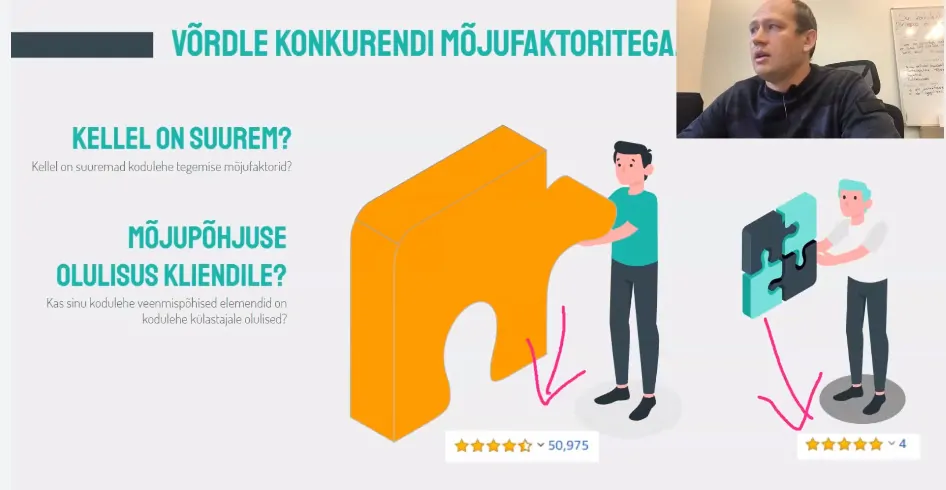
Factors to compare:
- Whose persuasion elements carry more weight? The one with stronger persuasion factors in web design wins.
Example: 4 maxed-out testimonials vs. 50 detailed reviews — no contest. The harder it is to obtain a proof point, the more valuable it becomes long-term.
- Relevance to the client. Are your website’s persuasive elements relevant to the visitor?
If a smaller provider has a persuasive component that matters more to the visitor than the larger competitor’s offer, the smaller one wins. The more diverse elements you offer, the broader your audience reach. But if you’re only targeting one segment, a larger offer may dominate.
- Design’s role in highlighting persuasive factors. Design guides the visitor’s eye to what matters.
If your key persuasive factors are not visually prominent, they may get lost. Example: if client reviews are hidden in a “Reviews” section and awards are in an “Awards” section, the visitor may never see them — and the site won’t convert. Good web design leads the eye naturally to important elements, one to the next, without distraction. Learn more about website design strategy here.
- Relatability: “I have the same problem.” What problems do you solve? What do you offer?
Reflecting your visitor’s pain points on your website is a powerful way to influence them. When someone has a problem, they’re actively searching for a solution — and you can be the answer. Talking about problems also helps SEO. People often search using problem-related keywords without even knowing your service solves them. A content writing course is highly recommended.
- Fear of missing out
The fear of missing out is the strongest motivator. If someone is offered €10,000, they’re more afraid of losing it than excited to win it. To avoid loss, they’re more willing to act. That’s why time-based discounts and scarcity tactics work well in e-commerce: “Only 1 item left in stock”, “Offer ends in 2 hours”, etc.
SUBMIT A QUOTE REQUEST
Ordering a website starts with a quote request. To provide you with the most accurate offer possible, please describe the kind of website you’re looking for.
Start a quick quote request with no obligation. Send your ideas to yllar@artmedia.ee and let’s talk.
Start a quick quote request with no obligation.

